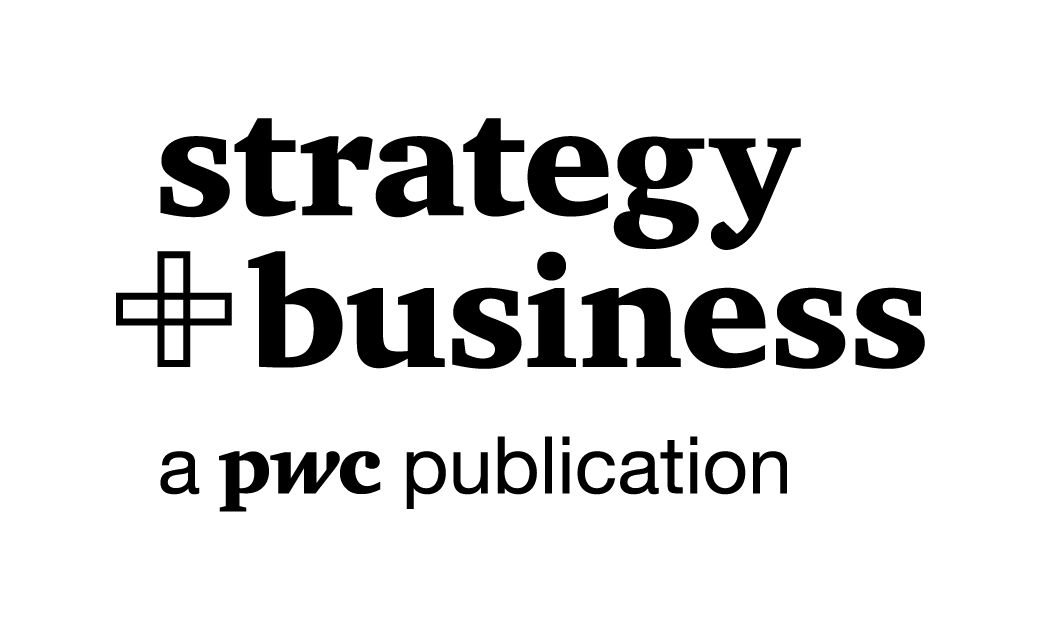In brief
Business leaders are used to scanning the horizon for new competitors, taking a microscope to their operations to uncover inefficiencies, and seeking ways to get the most from their people. But making business model change real requires a whole new level of acuity.
CEOs need to be constantly awake to impending disruptions—including novel tech, climate shocks, and geopolitical conflict—that will trigger value-pool shifts and open doors for rivals. They also need to keep a close eye on leading indicators that flash red when reinvention pressure reaches a critical level in their industry.
Perhaps most important, executives must seek opportunity in places they might never have thought to look. Consider the journey of a specialized B2B manufacturer that’s reinventing itself as a D2C player:
1. See farther, deeper, and better
2. Turn walls into bridges
Business model change is hard, but three critical abilities will give you the power to push ahead.
In depth
Give feedback
We use cookies to make our site work well for you and continually improve it. The cookies that keep the site functioning are always on. We use analytics to help us understand what content is of most interest. For detailed information on how we use cookies and other tracking technologies, please visit our cookies information page. It’s your choice to accept the use of analytics or not by clicking “Accept” or “Decline.”
Accept
Decline

©2024 PwC. All rights reserved. PwC refers to the PwC network and/or one or more of its member firms, each of which is a separate legal entity. Please see www.pwc.com/structure for further details. Strategy+business is published by certain member firms of the PwC network. Articles published in strategy+business do not necessarily represent the views of the member firms of the PwC network. Reviews and mentions of publications, products, or services do not constitute endorsement or recommendation for purchase. Mentions of Strategy& refer to the global team of practical strategists that is integrated within the PwC network of firms. For more about Strategy&, see www.strategyand.pwc.com. No reproduction is permitted in whole or part without written permission of PwC. “Strategy+business” is a trademark of PwC. Cookie Policy
Change analytics preferences
We use cookies to make our site work well for you and continually improve it. The cookies that keep the site functioning are always on. We use analytics to help us understand what content is of most interest. For detailed information on how we use cookies and other tracking technologies, please visit our cookies information page. It’s your choice to accept the use of analytics or not by clicking “Accept” or “Decline.”
Accept
Decline
Share
subscribe

Subscribe
More issues
The pressure on CEOs to reinvent their business has never been more intense. To lead their company on the reinvention journey, executives need to sharpen their acuity for seeing novel threats and opportunities, rethink boundaries with an eye toward collaboration, and shatter inertia. By building those abilities now, leaders can make successful business model change a reality.
Subscribe
More issues
More from s+b
Podcast
pwc.com
Give feedback

Illustrations by Martin Barreto
Pause motion
Want more insights?
Get s+b direct to your inbox
7 min
Dive deeper:
Make business model reinvention real
1. See farther, deeper, and better
quest
In brief
2 min
Let us know what you think about s+b
Tell us your thoughts
Give feedback
BACK TO TOP
9 min
3. Conquer inertia
—Andy Warhol
They always say time changes things, but you actually have to change them yourself.”
When PwC studied the differentiating characteristics of companies that enjoy a massive performance edge, an interesting finding emerged. Those top-performing companies are more than twice as likely as their peers to generate greater than 60% of their revenue from business ecosystems—and they expect that percentage to increase in the future.
Those organizations recognize that working within business ecosystems, or collaborating across industry boundaries, can deliver access to new customers and markets, privileged customer data insights, and complementary skills and capabilities. But ecosystems aren’t just linked to better performance in the here and now; they’re essential for reinvention, too. Ecosystems will soon become a primary mode of competition—and the lens through which CEOs need to view value:
If reaching across boundaries is important, so is understanding where those boundaries are shifting, and how fast they are doing so. Indeed, PwC research suggests that achieving a sustainable future requires not only radical corporate collaboration but a fundamental reconfiguration of the industrial system. This transformed model is delineated by basic human activities, such as how we feed ourselves, how we build, how we make and power things, how we care for our health, and how we move.

Don’t forget tax, the hidden value in business model reinvention

Transformative leadership for extraordinary times

The reconfiguration imperative

PwC Pulse Survey: Finding opportunity in reinvention

When is the right time to
reinvent your business?

From stagnation to innovation: Make business model
reinvention real
Continue the reinvention journey
Explore the podcast series from strategy+business, which convenes a global community of solvers to tackle the world’s most important problems
Want to hear more?
EXPLORE
Nicki Wakefield
Global Clients and
Industries Leader,
Partner, PwC UK

Carol Stubbings
Global Chief
Commercial Officer,
Partner, PwC UK

Rob Silverwood
Asia-Pacific Business Model Reinvention Leader,
Partner, PwC Australia

Venky Jayaraman
Business Model
Reinvention,
Principal, PwC US

Veronique Roos-Emonds
EMEA Business Model Reinvention Leader,
Partner, PwC Netherlands

Matthew Duffey
Global Business Model Reinvention Leader,
Principal, PwC US

Contact us
Your ten-minute power-read for December 2024
The takeaway? Often, the best first step on the road to reinvention is cultivating a more penetrating view into the everyday experience of customers—their pain points, their unmet needs, and the social dynamics that inform their decisions. Wait too long, however, and you’ll find yourself stuck in traffic: more than three-quarters of companies polled in a recent PwC survey on reinvention have started or completed measures to reach new customers directly.
Source: Textron
Though Textron is today known for making everything from golf carts to attack helicopters and weapons systems, the company started out in 1923 in the textile industry—when it was called the Special Yarns Corporation.
2. Turn walls into bridges
Seeking to boost growth, executives at a specialized maker of large-format commercial printers turned their attention to an adjacent market segment that was large and fragmented, and that—because of the burgeoning creator community—had ample room for growth.
The company explored several potential business models before creating a platform to serve as an orchestrator between content providers, end customers, and print service providers.
The platform, still in its early days, has already attracted 25,000 partners and counting.
We’re already seeing that kind of reconfiguration in smart mobility, an ecosystem that encompasses fleet operators, battery manufacturers, mining companies, electricity generators, car dealers, and other players. Anticipating where your company may sit in a reconfigured sectoral landscape goes hand in hand with reimagining how you can create, capture, and deliver value.
Leaders also need to spark internal change by refocusing their company’s talent and capabilities to facilitate business model reinvention. PwC has identified five differentiators that transformative leaders possess:
Leading reinvention ultimately hinges on making the strongest possible case for systemic change—one that’s informed by a wide range of external voices but that still secures the buy-in of your people.
Source: Statista
The India-based IT services giant Wipro was founded in 1945 as West India Palm Refined Oils Limited. The company made vegetable oil, soap, and other related products.
Dive deeper:
The reconfiguration imperative
For companies embarking on reinvention, a logical follow-on to more dynamic and targeted resource reallocation is investing in an MVP initiative. Such an approach reduces barriers to buy-in by creating a low-cost pilot that can be adapted and scaled; in many cases, it can also generate revenue for future reinvention moves. As the term suggests, the design of any MVP pilot should comprise the minimum elements needed to test the new business model’s value-creating potential.
And yet, data from PwC’s 27th Annual Global CEO Survey suggests that many executives may be taking this reinvention driver for granted; nearly two-thirds of CEOs said their company reallocates just 20% or less of its resources from year to year. Take a hard look at how your organization’s human and financial capital is deployed, and make sure reallocation decisions are based on objective assessments that aren’t influenced by internal power dynamics or common biases, such as the sunk cost fallacy (a reluctance to abandon a project because a lot of money has been sunk into it).
Want to boost momentum for your reinvention efforts? Get your tax and legal functions on board. They’re well placed to inform vital operating model decisions by anticipating the nitty-gritty implications of reinvention moves—including credits and incentives that can offset the costs of change. In fact, when would-be reinventors consider tax in their strategic decisions, they mitigate risk in the new business, simplify its operating model, and can increase profits by 2 to 10 percentage points.
3. Conquer inertia
When weighing the biggest decisions, CEOs often cling to what might seem to be a piece of solid bedrock: confidence in what’s working. But as reinvention pressures increase, an abiding faith in the status quo becomes a liability. A reflexive aversion to the costs of change (such as the cannibalization of products) can also hold leaders back. So too can a resistance to organizational transformation (for example, the creation of new departments or lines of accountability), and a focus on skills that are tailored to present needs instead of future ones. In an era of reinvention, inertia is your enemy.
Breaking free of it isn’t easy, but CEOs can start by focusing on two things: more dynamic resource reallocation and a minimum viable product (MVP) approach to new initiatives.
Resource reallocation
PwC research has shown that higher rates of resource reallocation are associated with both higher profit margins (except for extreme levels of reallocation) and greater levels of reinvention:
An MVP initiative
Dive deeper:
Don’t forget tax
Source: Louis Vuitton, LVMH
Luxury good maker Louis Vuitton, founded in 1854, specialized in the manufacture of boxes and trunks for travel on carriages, boats, and trains.
In conclusion
Source: Nintendo
The road won’t be short or smooth, but that’s no reason to delay getting started. After all, companies have been successfully reinventing themselves for a long time. (You’ll see some memorable examples as you scroll down.)
1. Getting better at spotting trends and triggers
2. Transcending traditional boundaries both inside and outside the company
3. Breaking free of inertia
In the face of climate change, novel technologies, and other external pressures, many executives are fundamentally rethinking how their company makes money and creates value. For them, business model reinvention isn’t a question of if, but when. This issue of strategy+business focuses on three core abilities that C-suite leaders need to build as they embark on the reinvention journey:
Click for audio
Sources: Museo Ferruccio Lamborghini; history.com

More from s+b
Feedback
Subscribe
Share
pwc.com
Pause motion
Level up your skills approach to win the battle for talent.
Illustrations by QuickHoney
9 min
We use cookies to make our site work well for you and continually improve it. The cookies that keep the site functioning are always on. We use analytics to help us understand what content is of most interest. For detailed information on how we use cookies and other tracking technologies, please visit our cookies information page. It’s your choice
to accept the use of analytics or not by clicking
“Accept” or “Decline.”
Decline
Accept
In brief | The skills quest | A game-changing approach | How to level up | Top
2 min
In brief
1. Getting better at spotting trends
and triggers
2. Transcending traditional boundaries both inside and outside the company
3. Breaking free of inertia
1. Getting better at spotting trends
and triggers
2. Transcending traditional boundaries both inside and outside the company
3. Breaking free of inertia
7 min
In brief
In brief | See farther | Walls to bridges | Conquer inertia | Top
In brief | See farther | Walls to bridges | Conquer inertia | Top

©2024 PwC. All rights reserved. PwC refers to the PwC network and/or one or more of its member firms, each of which is a separate legal entity. Please see www.pwc.com/structure for further details. Strategy+business is published by certain member firms of the PwC network. Articles published in strategy+business do not necessarily represent the views of the member firms of the PwC network. Reviews and mentions of publications, products, or services do not constitute endorsement or recommendation for purchase. Mentions of Strategy& refer to the global team of practical strategists that is integrated within the PwC network of firms. For more about Strategy&, see www.strategyand.pwc.com. No reproduction is permitted in whole or part without written permission of PwC. “Strategy+business” is a trademark of PwC. Cookie Policy
Change analytics preferences
We use cookies to make our site work well for you and continually improve it. The cookies that keep the site functioning are always on. We use analytics to help us understand what content is of most interest. For detailed information on how we use cookies and other tracking technologies, please visit our cookies information page. It’s your choice to accept the use of analytics or not by clicking “Accept” or “Decline.”
Accept
Decline
Contact us
Further reading: Go deeper on workforce
Explore the podcast series from strategy+business, which convenes a global community of solvers to tackle the world’s most important problems
Want to hear more?
EXPLORE
Get s+b direct to your inbox
Want more insights?
Subscribe
Let us know what you think about s+b
Tell us your thoughts
Give feedback
More issues
BACK TO TOP
In brief | See farther | Walls to bridges | Conquer inertia | Top
—Richard Branson
In brief | See farther | Walls to bridges | Conquer inertia | Top
More issues

